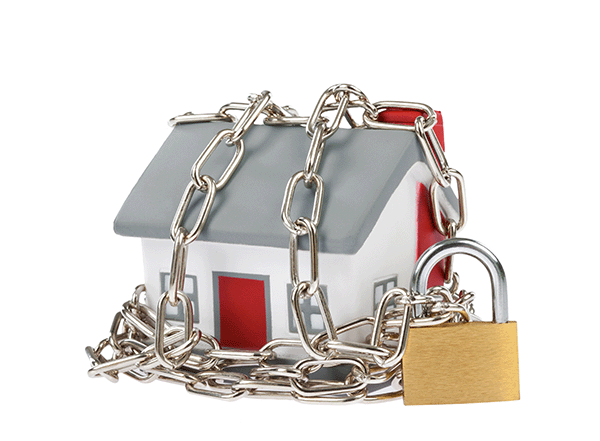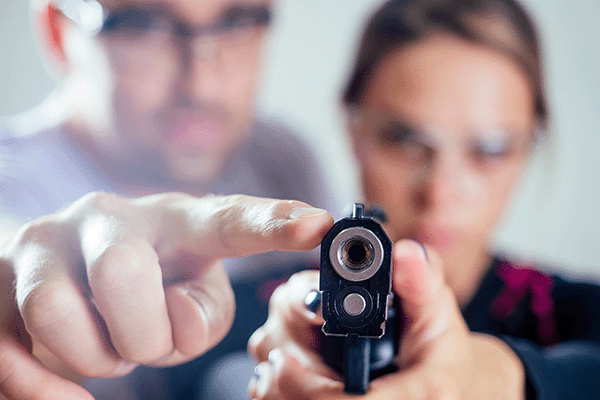
Practical Safety Measures – In today’s world, ensuring your home’s safety has never been more crucial. Whether you’re a homeowner, a parent, or simply someone who takes a keen interest in security, understanding and implementing effective home defensive measures can offer peace of mind and protection for you and your loved ones. This blog post aims to guide you through a comprehensive exploration of home safety strategies, providing you with tangible steps to fortify your living space against potential hazards and intrusions.
Home is where the heart is, but it’s also where your most valuable possessions reside. For many, the idea of a secure home equates to a secure family. This post will walk you through an array of measures, from simple and cost-effective solutions to more advanced technologies, ensuring that everyone can find the right fit for their needs. By the end of this article, you’ll be equipped with the knowledge needed to make informed decisions on enhancing your home’s security.
Understanding the Importance of Home Security
Home security isn’t just about protecting valuables; it’s about creating a safe haven for your loved ones. The peace of mind that comes with knowing your home is secure is invaluable. But what exactly makes a home secure? It’s a mix of physical barriers, technological advancements, and personal habits that together form a robust defense strategy.
In recent years, statistics have shown that homes without security measures are three times more likely to be targeted by burglars. This staggering fact underscores the urgency of equipping your abode with the right protective measures. A well-secured home deters criminals, reduces the likelihood of break-ins, and enhances the overall safety of the neighborhood.
Additionally, the psychological benefits of a secure home should not be underestimated. Knowing that your family is protected allows you to focus on other aspects of life without the constant worry of potential threats. By investing time and resources into home security, you pave the way for a more tranquil and stress-free environment.
Assessing Your Current Security Status
Before making any improvements, it’s essential to evaluate your home’s existing security framework. Start by conducting a thorough inspection of your property. Look for vulnerabilities such as poorly lit areas, overgrown shrubs that could serve as hiding spots, or outdated locks on windows and doors. Identifying these weak points is the first step in fortifying your home.
Consider also the external factors, such as the neighborhood’s crime rate and the level of community vigilance. Are there neighborhood watch programs in place? Knowing the local security dynamics can help tailor your defensive measures accordingly.
Once you’ve pinpointed potential issues, prioritize them based on risk level. Address the most glaring vulnerabilities first, such as flimsy door locks or broken window latches. Creating a list of security improvements provides a clear roadmap for enhancing your home’s defenses.
Reinforcing Entry Points
The majority of break-ins occur through front doors, back doors, and windows. Strengthening these entry points is crucial in preventing unauthorized access. Begin with installing deadbolts and high-quality locks on all doors. Consider using longer screws in strike plates for added durability against forced entry.
Windows are often overlooked but are equally vulnerable. Reinforce them with window locks and security film, which can make glass shatter-resistant. For extra protection, consider installing window bars or grilles, especially for ground-level windows.
Sliding doors, due to their design, present a unique challenge. Installing a security bar or a rod in the track can prevent them from being easily forced open. By bolstering these key entry points, you make it significantly harder for potential intruders to gain access.
Enhancing Perimeter Security
Securing the perimeter of your property serves as the first line of defense against intruders. Start by evaluating your fencing or hedging. Ensure there are no gaps that could allow easy entry, and consider adding height to deter climbing. Thorny plants can also act as natural deterrents when strategically placed.
Installing motion-activated lights around the perimeter is another effective measure. These lights not only illuminate potential hiding spots but also startle intruders, drawing attention to their presence. Ensure that all pathways and entrances are well-lit to minimize shadowy areas.
CCTV cameras have become a staple in modern home security. Position cameras to cover all angles of your property, particularly entry points and blind spots. Choose systems with remote monitoring capabilities, allowing you to keep an eye on your home even when you’re away.
Utilizing Smart Home Technology
Incorporating smart home technology adds a layer of convenience and increased security to your home. Smart locks, for instance, allow you to control access remotely, whether you’re letting in a guest or ensuring you’ve locked up after leaving. These locks can also provide activity logs, alerting you to any unauthorized attempts.
Smart doorbells equipped with cameras enable you to see and communicate with visitors, even when you’re not home. Many systems offer motion detection alerts, keeping you informed of any activity at your doorstep.
Home automation systems can further bolster security by simulating occupancy. Automated lighting and sound systems can create the illusion of an occupied home, deterring potential intruders looking for empty properties.
Establishing a Security Routine
A routine that incorporates daily security checks can significantly enhance your home’s safety. Make it a habit to double-check that all doors and windows are locked before leaving or going to bed. Regularly test alarms and security systems to ensure they are functioning correctly.
Encourage family members to adopt these practices. Educate children about the importance of home security and set guidelines for opening doors to strangers or leaving the house unattended. A collective effort reinforces the overall security strategy.
Periodically review your security setup to adjust for any changes, such as new family members, pets, or renovations. Staying proactive and consistent in your approach to security will yield the best results.
Building a Community Support System
Engagement with your neighbors can greatly enhance your home’s security. A community that looks out for one another is less attractive to criminals. Participate in neighborhood watch programs and encourage communication among residents about suspicious activities.
Social media platforms and neighborhood apps offer a convenient way to share information and stay updated on local security concerns. By staying informed and connected, you contribute to a safer environment for everyone.
Additionally, fostering a sense of community can lead to collaborative efforts in improving neighborhood security, such as group investments in CCTV systems or organizing regular safety meetings.
Investing in Professional Security Services
While DIY measures are effective, professional security services can offer additional peace of mind. Consider hiring a security consultant to assess your home and provide tailored recommendations based on current trends and technologies.
Alarm system companies often provide 24/7 monitoring, alerting authorities immediately in the event of a break-in. This rapid response can be crucial in minimizing damage and loss.
Regular maintenance of security systems is essential to ensure optimal performance. Professional services can offer scheduled check-ups and upgrades, keeping your home protected against evolving threats.
Understanding Legal Implications
It’s important to be aware of the legal aspects of home security measures. Ensure that any installations, such as CCTV cameras, comply with local privacy laws. This includes positioning cameras so they do not infringe on neighbors’ privacy.
Understanding your rights and responsibilities as a homeowner can also inform your security strategy. In the event of an incident, knowing the legal procedures can guide your response and recovery.
Consulting with legal professionals or local authorities can provide clarity and help avoid potential legal pitfalls associated with certain security measures.
Balancing Security with Aesthetics
While security is paramount, it doesn’t have to come at the expense of your home’s aesthetic appeal. Many modern security products are designed to blend seamlessly with home decor. Choose options that complement your home’s style while offering robust protection.
For instance, decorative window grilles can enhance security while adding visual appeal. Smart technology devices are often sleek and unobtrusive, fitting into contemporary home designs.
Ultimately, the goal is to create a secure environment that feels welcoming and comfortable for you and your family. Striking a balance between security and aesthetics ensures that your home remains both beautiful and safe.
Maintaining a Long-Term Security Plan
Security needs evolve over time, making it essential to continually assess and update your strategies. Regularly revisit your security plan to accommodate any changes in lifestyle, property layout, or technological advancements.
Stay informed about the latest security trends and innovations. Subscribing to relevant publications or attending security expos can provide insights into new products and strategies.
By maintaining a long-term perspective, you ensure that your home remains a safe and secure haven for years to come. Being proactive and adaptive in your approach can protect against both current and future threats.
Conclusion
Creating a secure home environment is an ongoing process that requires a combination of awareness, technology, and community effort. By implementing the strategies discussed in this post, you can significantly enhance your home’s security and enjoy greater peace of mind. Remember, security is not a one-time task but a continuous commitment to safeguarding what matters most.
For those interested in further exploring home security solutions, consider reaching out to professional consultants or joining local security workshops. Together, we can build safer communities and protect our homes from threats.
Products:
12 Gauge Dragon’s Breath Shot Gun Ammunition
Videos:

